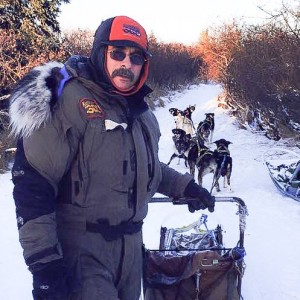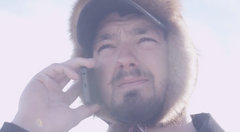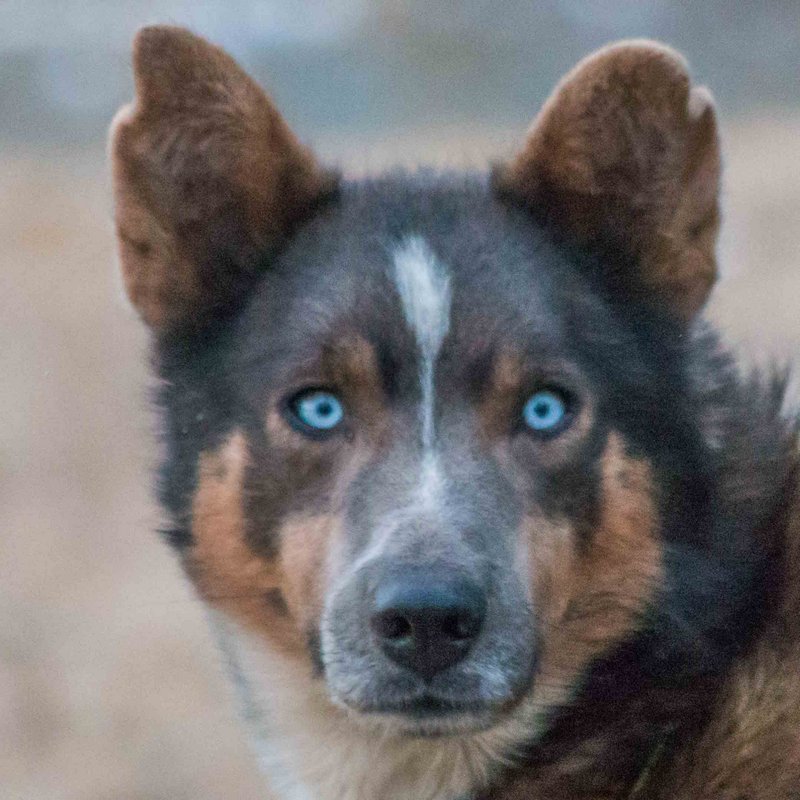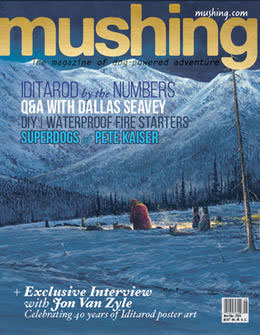
Myron Angstman
There is nothing worse for a dog race fan than to have a long race decided early. The unusual experience of watching an event unfold from afar for eight or nine days, non-stop, and at a very slow pace creates a level of suspense or drama that is best served by a close finish, hopefully involving a team or two among the favorites of the fan doing the watching. There is not likely to be a close finish in this year’s Iditarod. Dallas Seavey was described as the team to beat a couple of days ago here, and that has now become ever more clear as he has seriously out gunned his closest competition in the last two days. He set off from Koyuk this evening with more than an hour lead, and ample speed to stretch that lead.
It is a dog race, and there are numerous things that could yet go wrong, but it would take a major turn of events for Dallas to finish any place but first. This comes from a guy who called last year’s race for Jeff King hours before he withdrew from the race. But King encountered weather that is not likely to repeat itself, in fact there is a forecast of nice weather all the way to Nome. Dallas is in line to win his third race and establish himself as the team to beat for years to come.
Some race fans will not be happy with that result. There are many reasons to cheer for a certain team or teams, and I thought it would be helpful to explain how I pick a team to pull for in the Iditarod. Its fairly complicated. First, I like to pull for the underdog, and that usually means someone who has not won the race before. It is likely better for the race, and for the sport, to have a new face emerge as winner as often as possible. Second I like to cheer for rural Alaskan teams, because of a common bond rural people share. There are only a few rural teams, so that narrows things a bit. I also like to cheer for teams that have a history with the Kuskokwim 300, our home town race and one which has been my favorite since I helped start it in 1980. The rural racers tend to all have a K300 history, so that part is easy, but I also tend to favor those racers from outside rural Alaska who take part in the K300 and speak well of our race wherever they go. Finally I naturally favor our local racers, and that definition includes anyone from the Yukon-Kuskokwim Delta.
That list resulted in a handful of favorites, none of which are going to win. The one with the best chance, Aaron Burmeister, looks to fall just a bit short, likely in the top five for sure. Another with a good chance, Pete Kaiser, is driving a nice bunch of dogs, good enough to win the Kuskokwim 300 this year, but in his view not seasoned enough to compete at the end of the Iditarod just yet. He is now battling to make the top ten. Other favorites like Richie Diehl and John Baker are a bit further back but still in line to get a pay check, while Katherine Keith and Chuck Schaeffer are in the middle of the pack. One more personal favorite Paul Gebhardt, will not win, but has come on strong in the last two days, and is now gunning for a top ten finish as well. I cheer for Paul because of his long history with the K300, and the fact that he is from Minnesota. He always claims the K300 is his favorite race, and has now become a fishing buddy.
Distant readers may not be aware of the fact that most teams in the Iditarod enter without any realistic chance of winning, in fact most who start know they are not likely to finish in the money (Top 30). But still they take part, training all winter, feeding and equipping a team, paying a huge entry fee and considerable freight expenses to be on the trail on many days that can be described as uncomfortable at best. Throw in lack of sleep and physical exertion and a reader might start to question why folks take part. To fully understand that you would have to experience the sight of Nome, Alaska, at night, 10 miles ahead as you top a rise and realize that after a thousand mile struggle across Alaska the end is actually in sight.
Myron Angstman is a veteran of the Iditarod and past champion of the Kuskokwim 300 and John Beargrease sled dog races. He practices law in Bethel, Alaska. For more dog race stuff, check his website at angstmanlawoffice.com

















